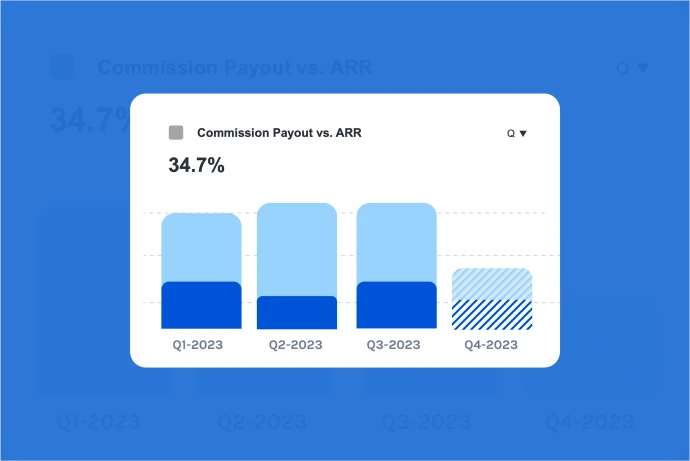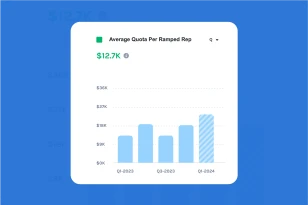What is Commission Payout vs. ARR?
Commission Payout vs. Annual Recurring Revenue (ARR) measures the total commissions paid to the sales team as a percentage of the company’s total ARR. It reflects the proportion of revenue that goes toward compensating the sales team.
Why is Commission Payout vs. ARR Important?
Commission Payout vs. ARR is a significant metric for several reasons:
- Cost Efficiency: It helps assess the efficiency of the sales team’s compensation structure. High commission payouts as a percentage of revenue may indicate that the company is spending a substantial portion of its revenue on sales commissions, potentially impacting profitability.
- Profit Margins: Understanding this metric is essential for evaluating profit margins. A high commission-to-revenue ratio can affect the company’s ability to generate profits.
- Sales Team Motivation: An appropriate commission structure is crucial for motivating and retaining the sales team. It ensures that the compensation aligns with the company’s revenue goals and sales performance.
- Investor Confidence: Investors often scrutinize this metric to gauge the company’s financial health and how effectively it manages sales-related costs.
How do you calculate Commission Payout vs. ARR?
Commission Payout vs. ARR Formula
Total Commissions Paid / Total ARR
How To Improve Commission Payout vs. ARR?
Improving Commission Payout vs. ARR involves optimizing the sales compensation structure and improving sales efficiency. Here are some approaches to improve this metric:
- Data-Driven Compensation: Review and adjust the commission structure to ensure it aligns with revenue goals and customer acquisition cost targets. Consider paying higher commissions for more profitable customer segments.
- Sales Efficiency: Implement strategies to improve the sales team’s efficiency and productivity. This includes optimizing lead generation, sales processes, and customer segmentation.
- Variable Compensation: Consider a variable compensation model that rewards high-performing salespeople with higher commissions. This can motivate the team to focus on higher-value sales.
- Retention and Upselling: Encourage the sales team to focus on customer retention and upselling to existing customers. Increasing the lifetime value of customers can offset commission costs.
- Clear Targets and KPIs: Set clear targets and key performance indicators (KPIs) for the sales team. Ensure that commissions are tied to specific performance metrics that drive revenue and profitability.
- Training and Development: Invest in training and development programs to enhance the sales team’s skills, product knowledge, and objection-handling abilities. A well-trained team can close deals more efficiently.
- Sales Technology: Equip the sales team with technology and tools that streamline their work and improve productivity. Automation can reduce administrative tasks and free up time for selling activities.
- Sales Analytics: Use data analytics to identify trends, assess customer behavior, and optimize sales strategies. Analyze the impact of commission changes on sales performance.




